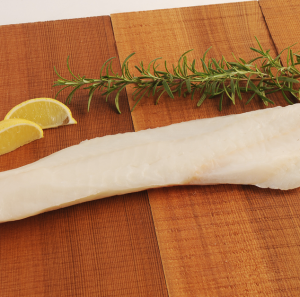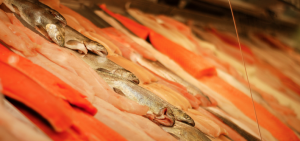
Browsing the multitude of frozen filets neatly placed on mountains of ice, you scan the names of fish at your local grocery store. You reach into your wallet for the Seafood Watch card that tells you what the most sustainable and healthy options are and make your choice. But is that expensive, supposedly sustainable “U.S. Pacific Cod” really from U.S. waters, and is it even Pacific Cod?
In April, the marine conservation nonprofit Oceana released a report exposing high rates of seafood fraud in Los Angeles. More than half of the seafood the group analyzed — from grocery stores, restaurants and sushi venues — was mislabeled. Such mislabeling undermines marine conservation efforts and poses health risks for consumers. According to Kimberly Warner, a senior scientist at Oceana and lead author on the report, the group expects the same rates of mislabeling would occur in the San Francisco Bay Area.
DNA tests from 119 venues showed that 55 percent of samples were mislabeled according to federal standards. For example, a snake mackerel species called escolar, typically found in tropical and temperate waters, was frequently labeled as “white tuna.” Escolar is known to cause diarrhea and other gastrointestinal problems, due to wax esters in gempylotoxin, an oily substance naturally found in escolar and indigestible to humans. Escolar also contains high levels of the amino acid histidine, which can cause a severe allergy-like reaction called scombroid poisoning.
The U.S. Food and Drug Administration advises against escolar’s sale. Other countries such as Italy and Japan, which are both known for their avid seafood consumption, have banned escolar outright.
The mislabeling of seafood is confusing to consumers who try to make healthy and sustainable choices at the grocery store and in restaurants. It also forces higher prices as less desirable species are sold as more expensive types of fish. And the practice undermines conservation efforts, such as the Seafood Watch wallet cards, Warner said, as mountains of supposedly rare fish are still apparently available in stores.
Seafood Watch, a program of the Monterey Bay Aquarium, was designed to help consumers select fish that are sustainably caught and low in dangerous substances, such as mercury. Intentional mislabeling of fish undercuts such efforts. Ultimately, Seafood Watch and similar projects can ensure sustainability higher up the seafood supply chain, to minimize the impacts of retail mislabeling.
For example, until Earth Day 2012, Whole Foods sold several species of seafood that was red-listed by Seafood Watch. But customers, armed with their cards, complained and the grocery chain made a decision to remove all red-list seafood from its stores. Now, overfished species such as Atlantic Cod are no longer available at Whole Foods. This kind of direct consumer action can have a profound positive effect on conservation, said Geoff Shester, Oceana’s California program director.
California State Senator Ted Lieu (D-Torrance) is currently introducing a new piece of state legislation, SB 1486, that would require large chain restaurants to label seafood by species name, country of origin, and whether it was farmed or wild caught.
“It’s not rocket science,” Shester said. “If FedEx can give you a tracking number on a package” then seafood, too, could be tracked. The problem is that traceability has not been a priority for the FDA, and existing laws are not well enforced, according to Shester.
Other action that is driving better labeling is Seafood Watch encouraging large seafood buyers to make sustainable seafood commitments and adhere to stricter guidelines. “Seafood Watch does not get involved in seafood fraud issues,” said Tom Pickerell, senior science manager at the Monterey Bay Aquarium. Rather, the partnerships they form help create incentives for big industry players to ensure their products are sustainable.

“You’ve got not only Whole Foods, but Target, Costco, Walmart, as well as some of the big service companies like Aramark and Compass Group, that deal with the thousands of airports and stadiums and hospitality, making these sustainable seafood commitments,” Shester explained. “It has changed the dynamic of the seafood industry.”
Mislabeling seafood is not a new problem. But with consumers, lawmakers and major industry players all increasingly focused on sustainability, it might be one whose days are finally numbered.
